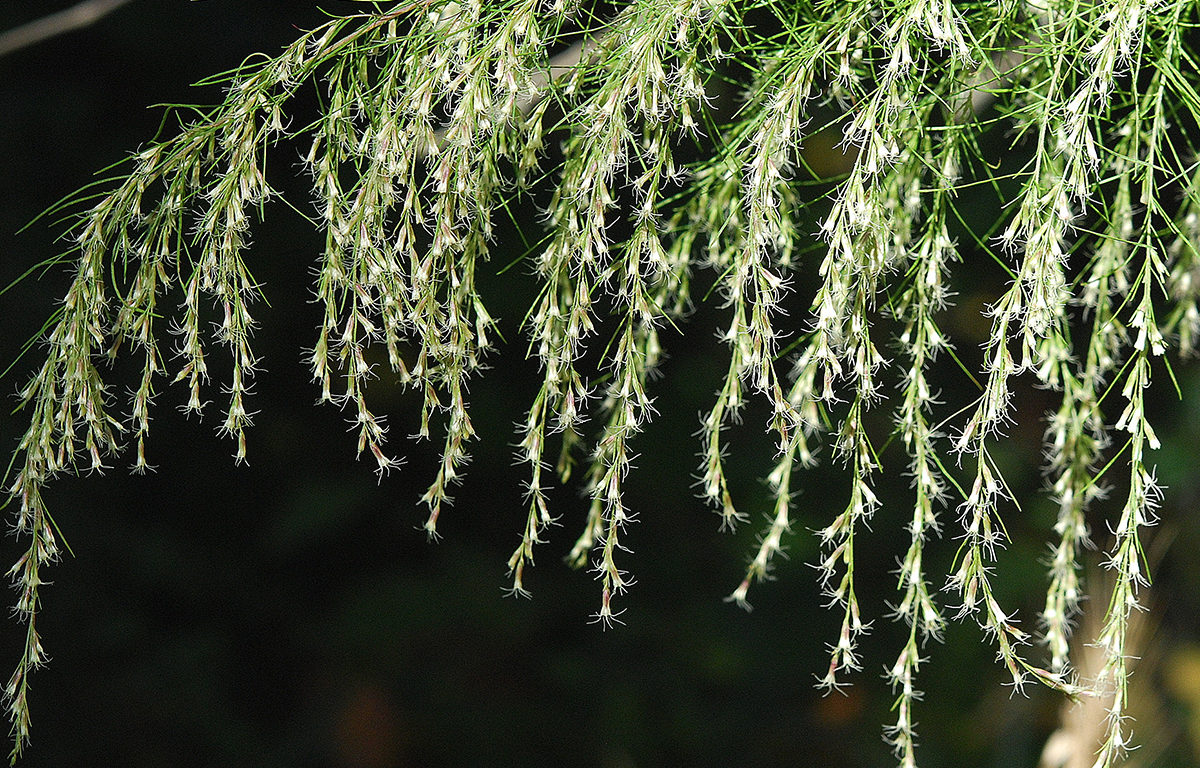
Above: Dog fennel (Eupatorium capillifolium), one of many edible plants found in coastal North Carolina.
BY DEBBI SYKES BRASWELL
To many people, dog fennel is a weed that ought to be yanked up.
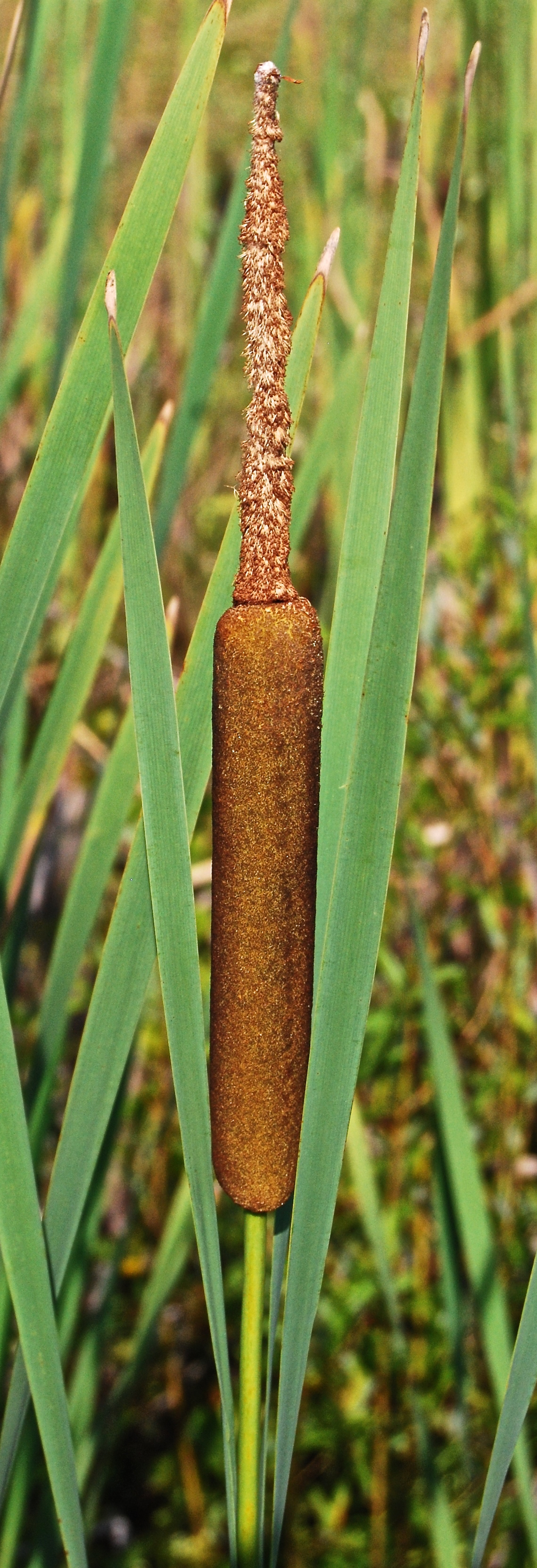
Common cattail (Typha latifolia), “the marsh’s supermarket.”
But The Caswell Beach Conservation Group thinks the feathery plant commands a special place at the table. At a recent event featuring plant ecologist Paul Hosier, group members put together refreshments drawn from plants indigenous to coastal North Carolina.
Member Barbara Waite harvested dog fennel, then blended its tiny fronds with cream cheese and spread the tasty concoction on crackers.
The menu also included yaupon tea, prickly pear cactus jelly, muscadine grape jelly, stuffed grape leaf rolls and Smilax tips — all boasting ingredients that can be found growing locally.
Some people today may not value plants that appear unattractive. But Waite notes those plants had been key parts of menus — and sustenance — going back centuries.
“They have their own beauty, and they belong. It’s a different kind of beauty,” she added. At the event, she highlighted the beauty of dog fennel by arranging some in a vase and sprinkling sprigs on the serving platter.
The Caswell Beach group came together a few years ago to preserve native plants and to help others see their appeal. At a recent event, members even wore native flowers, and arranged their fare elegantly.
Hosier appreciated the presentation. “That was attention to detail,” he said.
He is author of the new edition of Seacoast Plants of the Carolinas, a publication of the University of North Carolina Press and North Carolina Sea Grant. The book includes details of 200 plants, and he notes those that are edible.
Max and Vicki Kohler of Caswell Beach enjoyed the samples. “It’s almost nutty in flavor,” Max said of the tea.
“We really loved the Smilax,” Vicki added. “We were trying to figure out where it was grown.”
The group did purchase some items on the menu. Prickly pear cactus jelly was an easy call after the group’s literally painful history with the plant. Members were able to rescue a specimen of the cactus before clearing began for the Oak Island Lighthouse parking lot. After all those spines, “we had enough of messing with prickly pear cactus, and no one wanted to take on jelly making,” Emily Wilkins said.
“However, the fruit is beautiful, and picking the fruit to make jelly would not have been as hazardous as digging the plant, transporting it and replanting it.” She jokingly called herself the group’s “Native Plant Projects Coordinator.”
Although the yaupon did not come from Caswell Beach, it is prolific there. Yaupon has a curious claim to fame as the only caffeinated plant native to the United States. “It is rich in antioxidants,” Wilkins said. “Its caffeine compares to other teas’, and historians have written about indigenous peoples drinking the tea. To prepare yaupon tea, harvest young leaves, dry them in the oven and steep them in hot water.”
Hosier notes that native plants can play a valuable supporting role on coastal tables. They add variety and interest.
“It’s not like oysters or flounder, where you’re going to make a meal of them,” he said. “Most of the items on the menu were side items like the jellies and the tea. The Smilax was a little bit more substantive.”
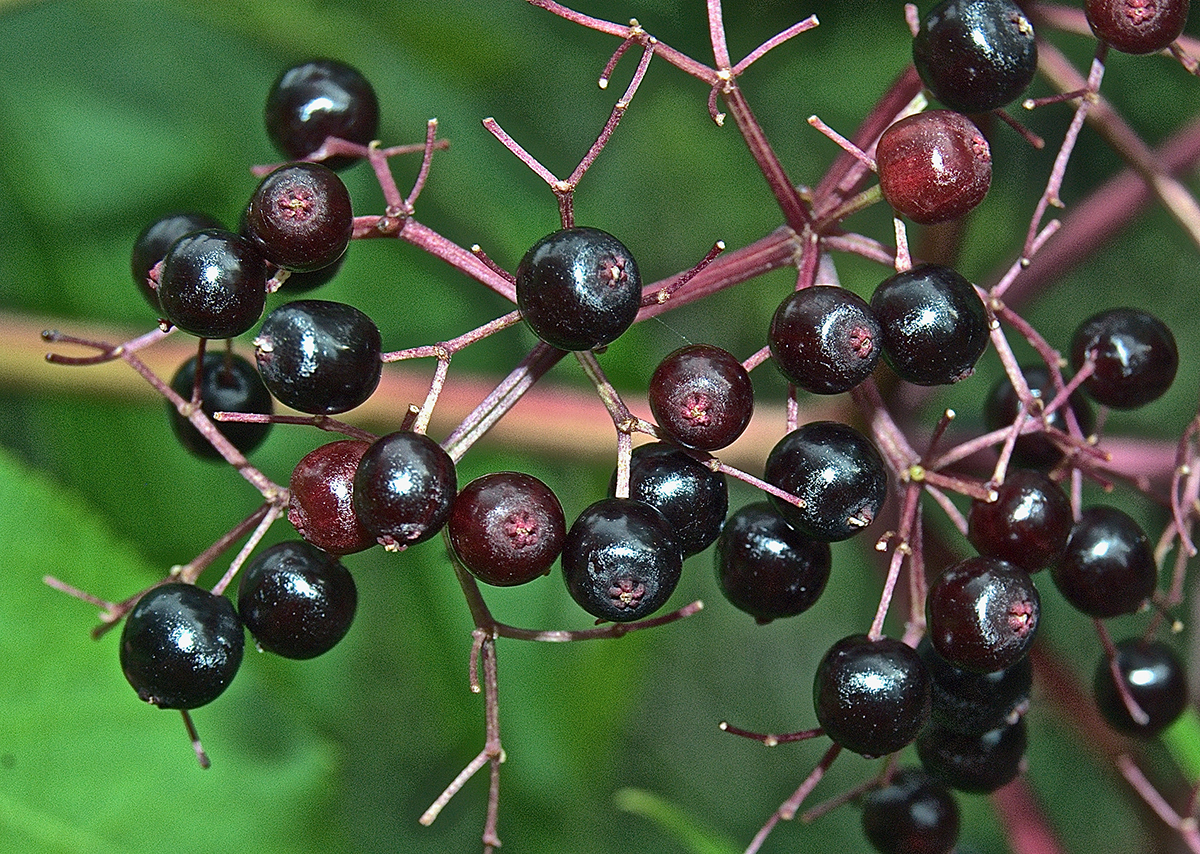
Common elderberry (Sambucus canaden) fruits.
The young Smilax stems were tender, with a slight snap — a success for the Caswell Beach group. “It really was quite tender, and I enjoyed it,” Hosier recalls. The perfect point is tricky. “You’ve got to get that very tip where it’s still flexible. Once it hardens up, it’s like bamboo.”
He also sympathized with the group’s decision not to make prickly pear cactus jelly. “You can mess with its fruits, fool around with them, and then after an hour or so you realize your hands are covered with these tiny, tiny, tiny spines,” he explains.
Terri Kirby Hathaway, marine education specialist for North Carolina Sea Grant, knows all about unconventional coastal food. Earlier in her career, she oversaw Marsh and Sea Fest, a series at the N.C. Aquarium on Roanoke Island. Participants foraged for wild food like marsh periwinkles, sea lettuce and cattails, then feasted on a meal featuring their discoveries. People returned year after year.
“I think it goes back to the food to fork, farm to table, slow foods movement,” Hathaway says. “It reduces your carbon footprint to eat local foods that don’t have to come a long distance. It’s a real accomplishment: I collected this, I cooked it up and I ate it, and it’s cheap.”
Hathaway recommends caution with some foods. Only two fungi experts were allowed to collect mushrooms for the Marsh and Sea Fests. “There are some mushrooms that will cause intestinal distress,” she said. “You have to be absolutely sure of what species it is because you don’t want to take a chance on those kinds of things.”
Also, participants never collected cattails from roadside ditches, where pollutants could wash onto the plants. Instead, they ventured beyond the ditches. Hathaway calls cattails the marsh’s supermarket because so many parts of the plant can be used for food.
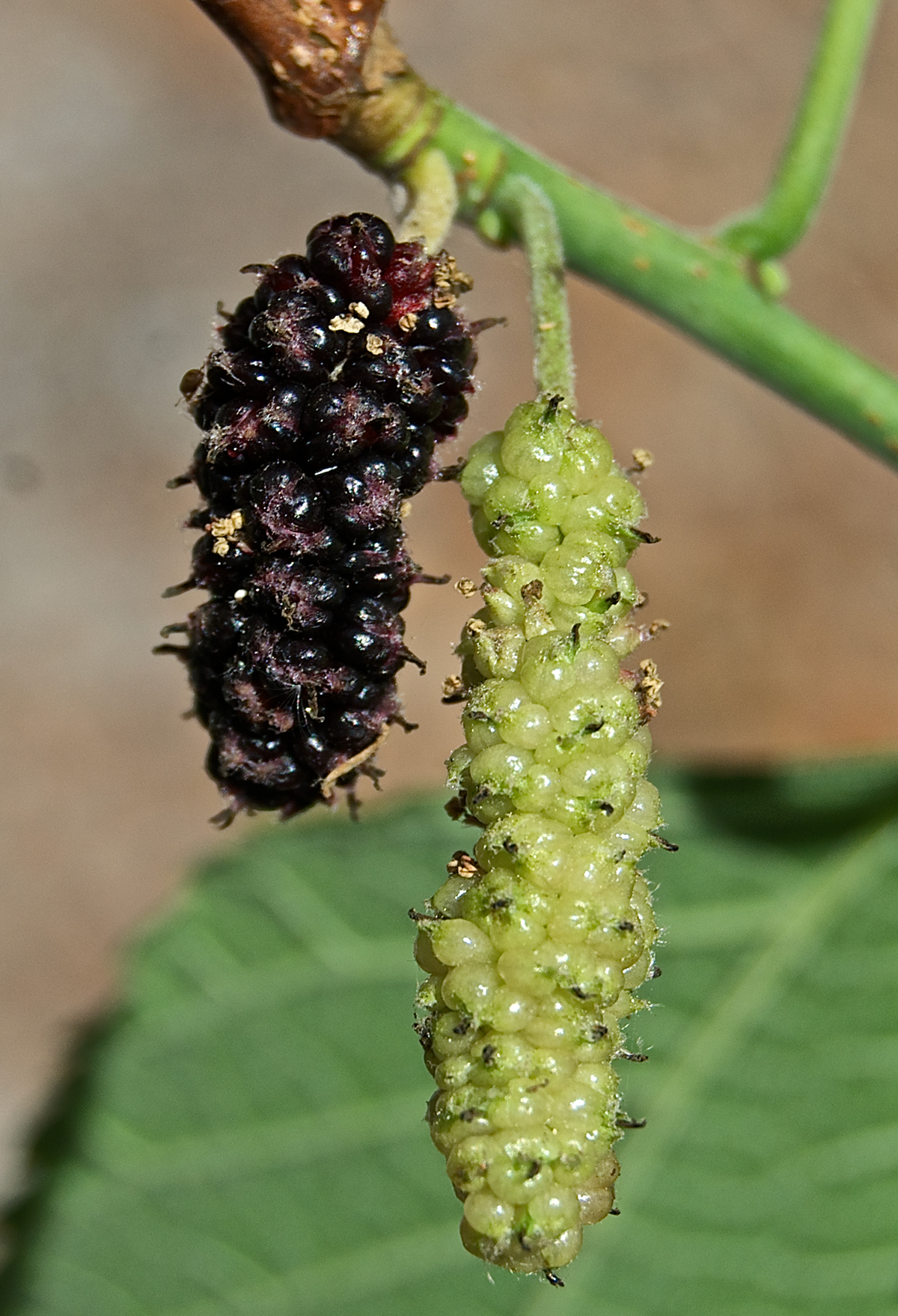
Red mulberry (Morus rubra) fruits.
Hosier suggests several more native plants that can entertain your taste buds:
Even unexpected plants like dwarf glasswort, or Salicornia, can make their way from salt marshes to a special place on your plate.
“I have actually had a meal on the coast where I was presented with a salad, and there were a few sprigs of Salicornia on the top of the salad,” Hosier said. “It gives it a little salty sparkle. It’s something that’s different.”
Like Hathaway, Hosier urges caution with some plants. He cites yaupon, whose scientific name is Ilex vomitoria. Indigenous peoples used yaupon to make a “black drink” intended to induce vomiting and act as a laxative in concentrated form. They drank the diluted brew socially.
“I guess in moderation it’s okay,” Hosier said. “But don’t get carried away!”
Always make sure your foraging does not include areas with pesticides, herbicides or run-off from roadways.
The Caswell Beach Conservation Group shares following suggestions:
DOG FENNEL-INFUSED CREAM CHEESE
8 ounces whipped cream cheese
One stem of dog fennel
1/4 teaspoon onion powder (or more to taste)
1/4 teaspoon garlic salt (or more to taste)
Harvest fresh dog fennel by cutting a long stem. Clean the herb by swishing it in cold water. Place it on a surface to dry (paper towels work well). Remove some of the feathery leaves from the stalk and chop into fine pieces. Combine fennel, onion powder and garlic salt. Incorporate the mixture into cream cheese. Serve on crackers with a pretty sprig of fennel on top.
— Barbara Waite, Caswell Beach
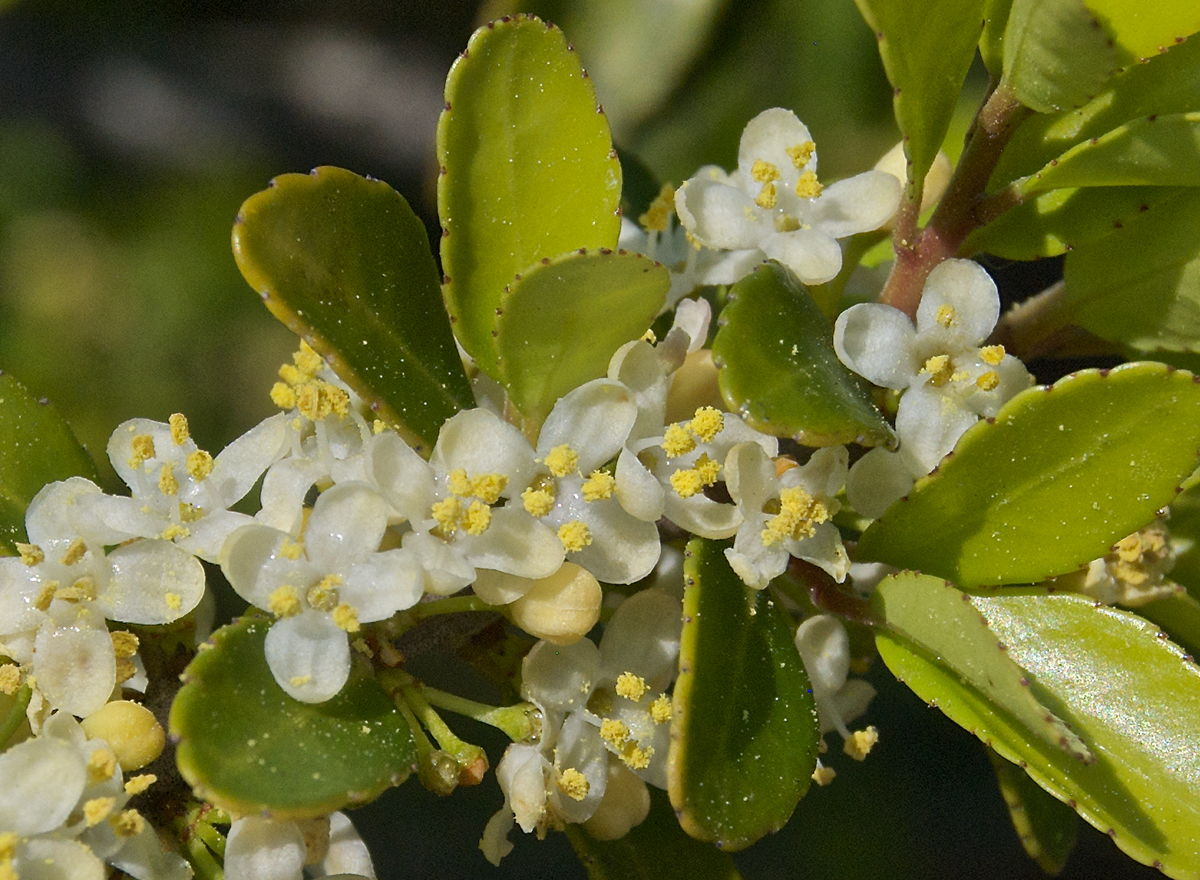
Male Yaupon (Ilex vomitoria) flowers.
YAUPON TEA
At home, Emily Wilkins of Caswell Beach follows the advice of this website in harvesting, washing, roasting, crushing and brewing the tea. She purchased yaupon tea bags to make the quantity of tea needed for the group’s event.
Terri Kirby Hathaway wrote about coastal edibles in an earlier story in North Carolina Sea Grant’s Coastwatch magazine. Here are a few recipes she enjoys:
GLASSWORT CHEESE BALL
2 8-ounce packages cream cheese, softened
¼ cup milk
¾ cup chopped glasswort
1 small can crushed pineapple
1 ¾ cups chopped pecans, divided
Using hands, thin cream cheese with milk, a little added at a time, up to ¼ c (may not use all). Clean glasswort well. Use only the bright green sections – chop into small pieces and add to cream cheese. Stir in crushed pineapple, glasswort, and ¾ c chopped pecans. Mix well and form into a ball. Coat ball with 1 c chopped pecans; place on wax paper and refrigerate until firm. Serve with crackers.

Beach bean (Strophostyles helvola) pod and flower.
— Marsh and Sea Fest, Manteo, NC
TOASTED BEACH BEANS
1 ½ tablespoon butter, melted
1 teaspoon granulated garlic (or garlic powder)
1 teaspoon salt
1 ½ cup shelled beach beans (from dark colored shells)
Mix melted butter, salt, and granulated garlic. Pour over shelled beans. Roast in a shallow pan at 250 degrees approximately 30 minutes, stirring every 10 minutes. Cool and eat.
— Marsh and Sea Fest, Manteo, NC
CATTAIL POLLEN PANCAKES
½ cup cattail pollen
1 tablespoon sugar
2 teaspoons baking powder
¼ teaspoon salt
1 tablespoon sugar
1 cup milk
1 egg
2 tablespoons vegetable oil
Mix dry ingredients together, and then add milk, egg, and oil. Mix only until just moistened. Heat griddle or pan until a drop of water sizzles. Pour batter onto the hot griddle. Turn pancakes when they are full of bubbles, just before they break. Serve hot. Makes 10 four-inch pancakes.
Note: Ingredients list updated July 12, 2019.
— primitiveways.com/cattail_pollen_pancakes.html
All photos by Paul Hosier, previously published in Seacoast Plants of the Carolinas, courtesy of UNC Press.
##